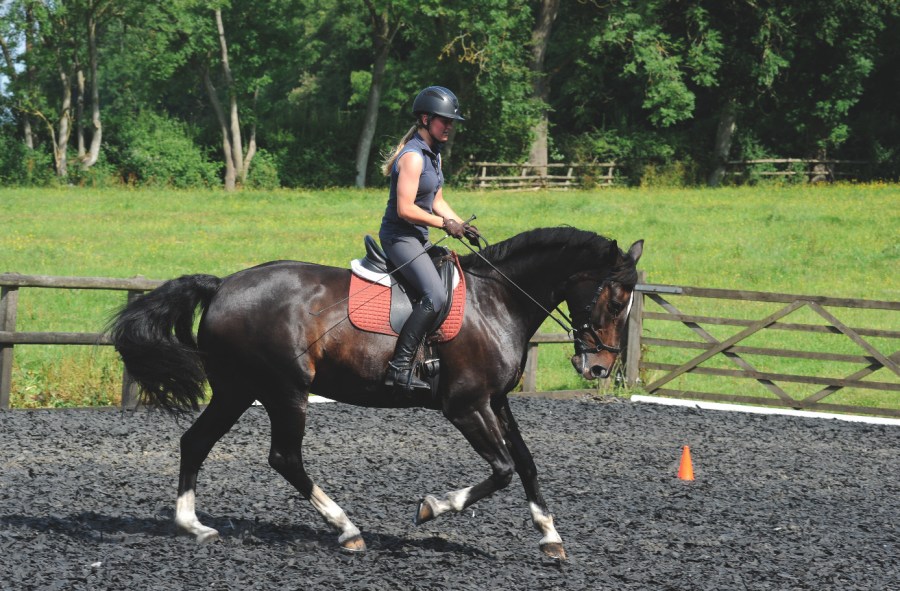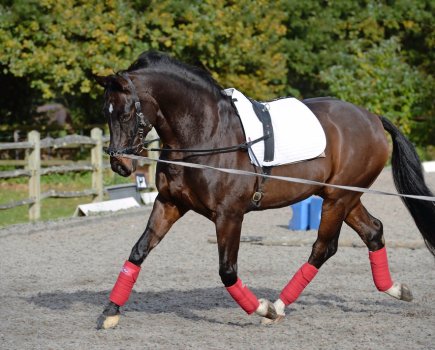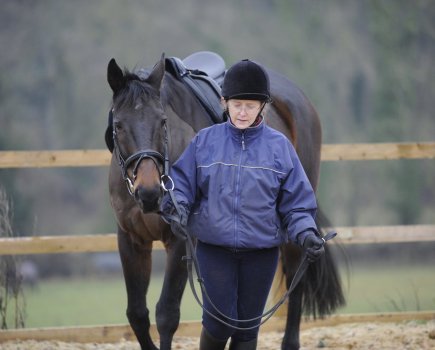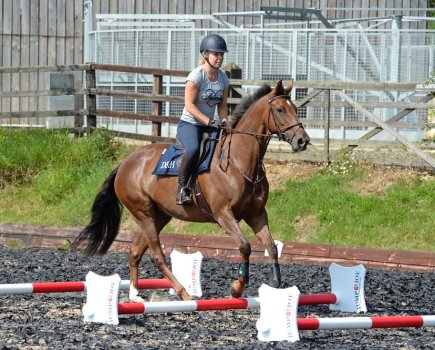Canter-walk-canter transitions, also known as simple changes, are a basic introduction to flying changes and come into dressage tests at elementary level. They enable you to change the rein in canter without doing a flying change, and enable you to develop your horse’s collection. Dressage rider Anna Ross explains two exercises for riding effective simple changes.
Simple changes are ridden at elementary, medium and advanced medium levels. Their primary purpose is to teach your horse to collect the canter and it’s a similar prepatory exercise for more difficult movements, such as the canter pirouette. It’s also necessary as a preparation for when you begin to enter the arena in canter, and there’s a walk to canter transition at novice, too, so it expands through all the levels. Simple changes are one of the building blocks for collection.
Exercise 1
Time: 15 minutes
Before attempting to ride a simple change, check that you can shorten your horse’s stride in canter. A good measurable way of doing this is to count the strides between two markers in your arena or schooling area, and then add in extra strides. For example, if you normally get 13 working canter strides along the long side of your arena between K and H, see if you can put 14 or even 15 strides into the same space.
- To begin, once you have decided on the number of strides, the next step is to ask your horse to shorten their canter stride. To ask them to collect, ride forwards but into a slightly resisting hand, and perform a series of small half-halts with your outside rein.
- During this transition, it’s really important that you keep your leg on. Think of your horse as a tube of toothpaste that is being squeezed from the bottom, not the middle. You have to squeeze the energy to your hand and keep the lid on.
- It also helps if you sit up a little at the same time and resist following the nod of the head with your hand. Your horse will learn these subtle adjustments and realise that this means they need to take their weight behind more.
Exercise 2
Time: 15 minutes
Next ensure that you can get a good direct transition from walk to canter. You can’t gather an empty vessel, so you need to make sure that your horse is going forwards before you even think about riding a simple change and collecting them. To begin with ride this exercise on a 20m circle going in the same direction. Once you are confident that you’re getting a good reaction, start asking for a different lead on the second canter strike off. Make this into a proper simple change and change the rein.
- In canter, start by riding a few forward and back transitions within the pace to check that your horse is on your aids.
- Now you can start asking for some forward walk to canter transitions to ensure that your horse reacts prompty to the aid. To do this, ask for an active walk, then give a clear canter aid with your outside leg behind the girth, inside leg on the girth, and a very small inside rein flexion to indicate to him which leg to strike off on.
- Once you feel your horse is going nicely forward into a contact, collect the canter by imagining that you’re trying to get them to canter on the spot and then, as the appropriate moment, give a clear aid for walk. Do this in the same way that you collected the canter – not by pulling back, but by sitting up and not following the nod of the head in canter with your hands. Keep your leg on so that your horse doesn’t break into trot. If they do, ride forward in canter and try again. It’s important that your horse doesn’t drop the aid.
- Repeat by going back up to canter again. For every canter-walk transition you ride, you should do two or three where you ride all the preparation, but don’t actually go into walk. This is to stop your horse anticipating what it is that you’re asking for.
Meet the expert: Anna Ross is an international dressage rider, trainer and producer of dressage horses. Based in rural Devon, she runs Elite Dressage from where she produces future dressage stars alongside business partner Lorna Wilson of Newton Stud.
Receive six issues of Your Horse magazine for just £15!










